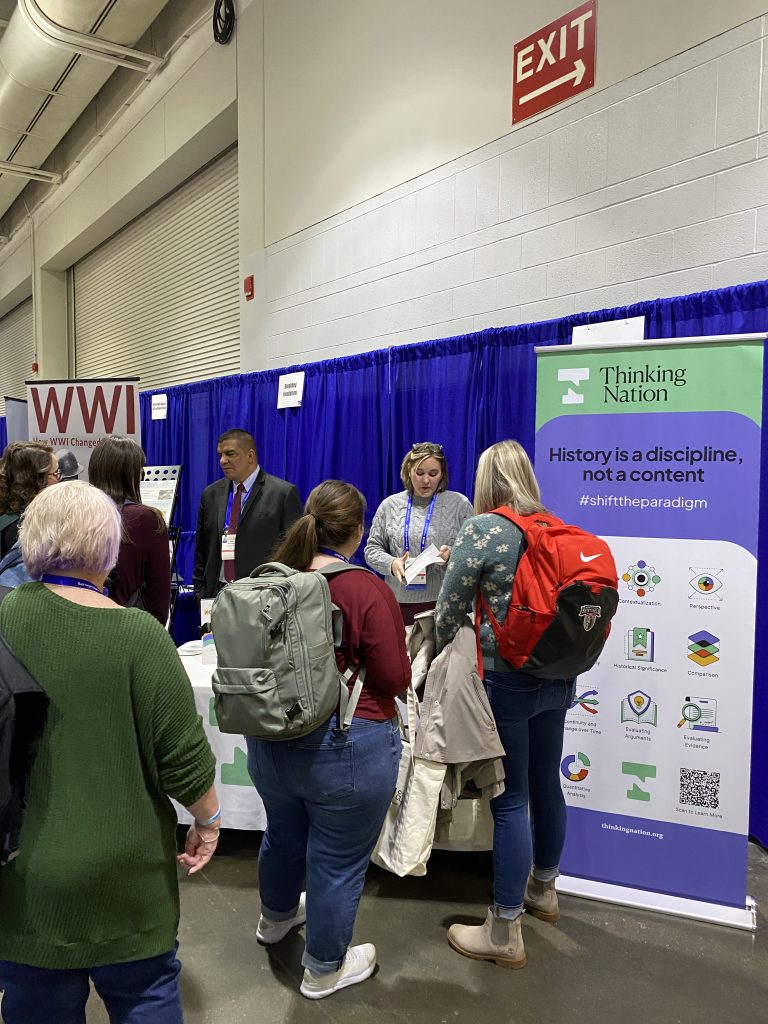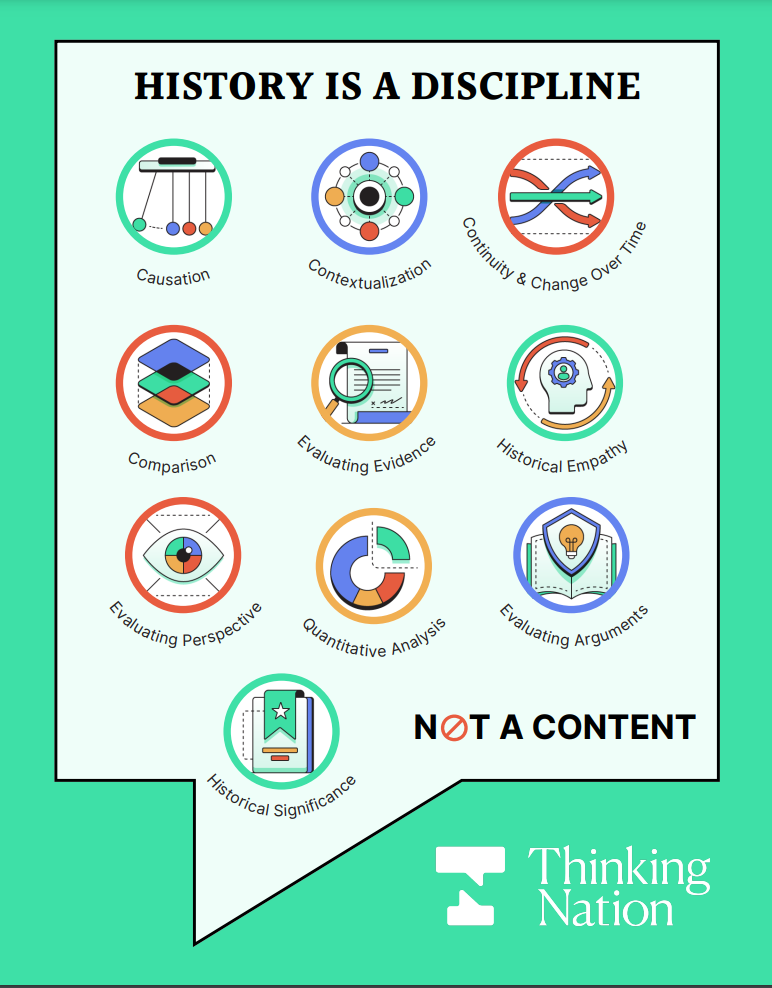What does a commitment to historical thinking look like? Why should it be our goal as teachers? At Thinking Nation’s pedagogical core, these are two questions we continuously try to answer with sincerity.

“History is a discipline, not a content” has become a bit of a motto of ours. And before we dive into a content vs. skills debate, or a reminder of the importance of background knowledge in literacy development, let’s acknowledge what the above motto is not. It is not a declaration for critical thinking at the expense of necessary background knowledge. It is not a constructivist idealism that throws out the fundamentals. It isn’t an “either/or” demand.
History demands content. We cannot study the past without, well, the past. Background knowledge is essential; without it, we cannot make connections to new learnings. But background knowledge, even in this sense, is a means not an end. If history is a discipline, it requires our engagement, our thinking. History is a discipline that equips those who engage with it to study, analyze, and make meaning of the past.
When we do this discipline well, we better engage with the present. We have the tools that every new literacy program wants us to have (“digital literacy,” “media literacy,” “AI literacy,” etc.). Historical thinking humanizes us as the scholars as well as those we study. It makes us more engaged and informed citizens. Historical thinking matters.
So how can we commit to historical thinking? In recent PDs I’ve challenged teachers to reframe questions of incorporation. Oftentimes, in the thick of our units, we ask “How can I incorporate more historical thinking?” This, however, makes historical thinking an added burden to whatever content you are teaching. We need to flip the question and ask, “How can I incorporate this content into my historical thinking framework?” With this mindset, the content is a conduit toward empowering our students with one of the most humanizing qualities we have: the ability to reason. Everything else follows our answers to that question.
Let’s get practical. Again, I will ask, what does a commitment to historical thinking look like? Simply, it looks like historical thinking being the fabric of our classrooms, weaving the content together to create a cohesive arc for our students.
Historical Thinking Matters: A Practical Guide
Here are some practical ways we can implement this mindset into our classrooms.
- Identify the historical thinking skills of every lesson and unit before teaching it. We always do this with content, but we often make skill connections in the moment.
- Make the implicit explicit for students. Name the skills! This is why we developed icons for our 10 historical thinking skills. We want students to see and know what practice they are developing in every lesson.

3. Put students in the role of scholars as often as possible (a minimum of 1x/week). There are a lot of creative ways to do this, but don’t underestimate the simple task of source analysis. It’s why we use THINKS consistently in the classroom. Try it!
4. Communicate success through the lens of historical thinking. If we talk about historical thinking often but mostly assess content retention, we are sending a message to our students that we don’t value their ability to think, just their ability to remember. This is why we’ve developed formative assessments on individual thinking skills. (Here is an example).
5. Make thinking processes a communal activity. Our Curated Research Papers and Socratic Seminars give students prolonged practice at historical thinking, speaking, and writing in order to build a community of practice among students. When dialogue is a feature, not an additive to our classrooms, students internalize their own agency. This means they practice the skills and dispositions that are not only essential for classroom success, but civic thriving.
Historical thinking matters. It not only is the bedrock of our discipline but it directly translates to the skills and dispositions our civic society craves. As a final aside (but no less significant), not only can our constitutional democracy be revitalized with more historical thinkers, so can our economy. Historical thinkers practice the durable skills that future jobs will demand. When we commit to historical thinking in our classrooms, we are committing toward civic renewal and economic opportunity. Let’s get to work.